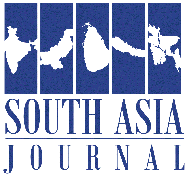
In the age of digital acceleration, the line between battlefield and newsfeed has blurred. The exponential growth of social media and digital platforms has created an ecosystem that not only connects billions but also incubates radical ideologies, facilitates propaganda, and empowers non-state actors. For Pakistan — a frontline state in the global war on terror — this convergence of technology and terrorism presents a unique and unprecedented national security challenge.
The digital realm is no longer a peripheral domain. It is now a primary theater of conflict where terrorists wage psychological warfare, propagate ideology, and even conduct logistical coordination. Between 2013 and 2023, Pakistan’s internet penetration surged from 23.7 million to over 116 million users — a transformation that, while promising digital democratization, has also enabled anti-state actors to exploit the open-access model of cyberspace.
Banned outfits such as Tehrik-e-Taliban Pakistan (TTP), Islamic State-Khorasan (ISKP), and Baloch separatist groups like the Baloch Liberation Army (BLA) and Baloch Liberation Front (BLF) have successfully embedded themselves in the digital ecosystem. Their use of platforms like X (formerly Twitter), Facebook, Telegram, TikTok, and Instagram has turned cyberspace into a breeding ground for radicalization, disinformation, hate speech, and coordination of terrorist operations.
One particularly troubling case is the glorification of terrorism through real-time attack reporting and propaganda videos. The BLA’s special operations unit, the Majeed Brigade, recently hijacked the Jaffar Express — and AI-generated content of the event flooded digital platforms. Shadowy social media accounts such as “Bahot Baloch” actively celebrated the attack, undermining state morale and promoting violence. The same account was given a platform by Indian media in a disturbing show of support for insurgency masquerading as journalism.
From posting visuals of dead security personnel to recruiting impressionable youth through multimedia content, terrorist groups have institutionalized their presence online. Telegram, in particular, has become a go-to tool for TTP and ISKP, where they release digital magazines, offer religious indoctrination, and coordinate activities — even encouraging women to join the so-called Jihad under the banner of FAK.
This digital proliferation poses a twofold threat. Internally, it destabilizes the information environment, challenges state writ, and hampers deradicalization programs. Externally, it projects a false narrative of Balochistan as an oppressed region seeking liberation, weaponizing ethnic grievances and misinformation.
The situation is further aggravated by India’s overt and covert support to these terrorist outfits. Islamabad has repeatedly warned the global community about New Delhi’s involvement in sponsoring terrorism inside Pakistan. The arrest of Indian naval officer Kulbhushan Jadhav, a self-confessed RAW operative, offered hard proof of cross-border subversion. Yet, more subtle methods continue to thrive unchecked — particularly in the digital arena.
Recent developments have added weight to these concerns. On the night of May 9th–10th, while Indian missiles were being fired at Pakistan, more than 30 coordinated terrorist attacks occurred in Balochistan — a move widely interpreted as a synchronized offensive by Indian-backed proxies. This was not an isolated event. It came amid inflammatory statements by Indian leaders such as Prime Minister Narendra Modi, Defence Minister Rajnath Singh, and Interior Minister Amit Shah — providing circumstantial validation of Indian complicity.
Meanwhile, Pakistan’s repeated warnings at international forums like the United Nations, OIC, SCO, and SAARC have yet to yield a concrete multilateral response. The threat is metastasizing. Terrorists are not just attacking with bombs — they are attacking with bytes.
India’s mainstream media has further blurred ethical lines by offering platforms to fugitive propagandists, as seen in the “Bahot Baloch” case. This dangerous symbiosis of national media, state policy, and terror propaganda fosters an ecosystem where terrorists are glorified, and state actors are demonized. These narratives fuel unrest, recruit followers, and destabilize peacebuilding efforts — both within and beyond Pakistan’s borders.
In sum, terrorism in the 21st century no longer depends solely on guns and bombs — it thrives on tweets, videos, and hashtags. The digital weaponization of separatism and extremism, especially with Indian support, represents a new frontier in asymmetric warfare. For Pakistan, winning this war requires a synthesis of cyber defense, narrative projection, and international legal engagement.
Pakistan must now act with urgency, not only for national security but also to safeguard the digital realm from becoming a sanctuary for those who seek to destabilize peace through violence and misinformation. The world must recognize this threat for what it is — a transnational, tech-enabled insurgency that no state can afford to ignore.
